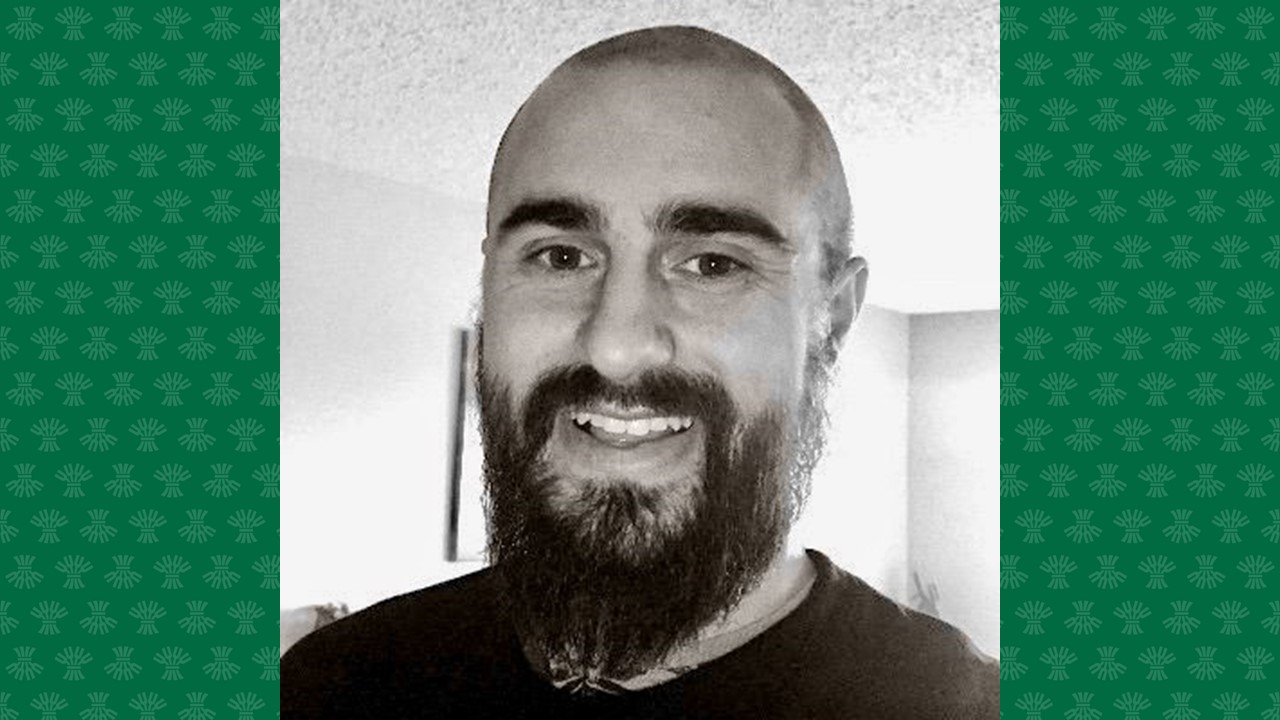
Hot-boxing Rats and Brain Neuroscience, with Dr. Robert Laprairie
Researchers in Robert Laprairie's laboratory are hard to miss, wearing tie-dyed lab coats as they oversee mice and lab rats in iPad-sized chambers filled with cannabis smoke.
By Researchers Under the ScopeListen to all episodes of Researchers Under the Scope podcast.
An associate professor in the College of Pharmacy and Nutrition, Dr. Laprairie and his team are trying to unravel the mysteries of human neurotransmitters and cannabinoid receptors, and their role in neurodegenerative disease.
"Cannabis is challenging. There's a lot of bureaucracy, there's a lot of stuff that gets in the way. So there was a knowledge gap," said Laprairie.
Laprairie's fascination with the unknown began early. As a child, he remembered borrowing the same book about the stars and our solar system multiple times from the Saskatoon Public Library.
But Laprairie never thought of himself as a career scientist, initially enrolling in the College of Education thinking he'd become a high school science teacher.
Midway through his studies, he took on a part-time job tending canola seedlings for Agriculture Canada — a job that made him re-think his plans, as he learned more about treating disease in plants.
After switching majors and completing his honours degree in biochemistry, Laprairie arrived at Dalhousie to complete his graduate studies, studying how to 'turn up the volume' on damaged cannabinoid receptors in patients with Huntington's disease, and certain forms of epilepsy.
"I wanted to focus more on the pharmacology. How does the CB1 [cannabinoid receptor type 1] as a receptor work?" said Laprairie.
Patients with Huntington's disease often lose up to half of their functioning cannabinoid receptors without ever knowing it.
It's not easy to see that slow degradation happening, Laprairie said. But he said much like the way human brain receptors are wired for seratonin, or for dopamine. the endocannabinoid system and CB1 receptors are essential.
"In animal studies we've seen the animals tend to be more anxious when the [CB1] receptors stopped. They tend to be somewhat spastic and their movements,” said Laprairie. “Their movements can be a little bit less coordinated and they seem to exhibit some of the symptoms of depression."
Today, Laprairie holds a Canadian Institutes of Health Research (CIHR) chair in Drug Discovery and Development. He and his team are trying to create positive alasteric modulators (PAMs) — drugs that boost, or turn up the volume on a patient's remaining CB1 receptors — without the intoxicating effects associated with marjuana.
In this episode, we also hear why communication -- and finding the right mentor -- is crucial for biomedical researchers and scientists with young families.
Laprairie jokes that he fathered one child as he completed each degree -- and with three young children, his early career became hectic.
"There's just a lot of strain that puts on a family. Communication and scheduling became essential for survival," he said.
Crediting Dr. Eileen Denovan-Wright, an 'amazing’ supervisor with helping him through his master's and doctoral work, Laprairie describes biomedical research as 'a team sport'
"Her support of me and her acknowledgement and understanding made all the difference in the world. I would not have been successful without that support," Laprairie said.
In 2016, Laprairie was the top pick in the CIHR's fellowship program, and he accepted a post-doctoral fellowship at The Scripps Research Institute in Florida.
Upon his return to Saskatoon, Laprairie went on to work with Dr. Richard Huntsman using cannabidiol (CBD), which appeared to reduce the frequency of childhood epileptic seizures when administered orally.
"Patients that were tested here at the University of Saskatchewan saw about a 50% drop in seizure activity," said Laprairie.
"For someone who is experiencing a lot of seizures that are otherwise untreatable, that's huge.”
His work studying the brain's response to drugs has been marked by bureaucratic hurdles and extensive paperwork filings with Health Canada. Even so, Laprairie says the pharmacology of hallucinogenic drugs including psilocybin mushrooms and LSD are one area he plans to explore in the future.
He believes some hallucinogens could serve as potential anti-depressants, among other therapeutic uses.
“There are a lot of unanswered questions there,” Laprairie said.
